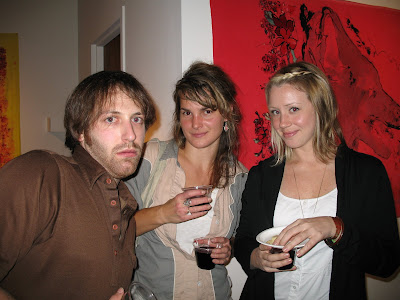
To read the article click here
To Visit Allison's Blog click here

 Jerri Castillo's Studio
Jerri Castillo's Studio Nikki Painter's Studio
Nikki Painter's Studio Mindy Hirt
Mindy Hirt Lana Stephens' Studio
Lana Stephens' Studio Kate Gartrell's Studio
Kate Gartrell's Studio Josh Baptista's Studio
Josh Baptista's Studio Yumi Hogan's Studio
Yumi Hogan's Studio Rachel Sitkin's Studio
Rachel Sitkin's Studio Claire Feng's Studio
Claire Feng's Studio Carlie Legield's Studio
Carlie Legield's Studio Studio of Brendan Loper aka B.Lo aka Peter Slacks
Studio of Brendan Loper aka B.Lo aka Peter Slacks  Bonner Sale's Studio
Bonner Sale's Studio Annette Isham's Studio
Annette Isham's Studio Allison Reimus's Studio
Allison Reimus's Studio Amy Kreiger's Studio
Amy Kreiger's Studio Kate G., Bradley Chris, Nikki Painter
Kate G., Bradley Chris, Nikki Painter



 Trinity
Trinity From Left: Cara Ober, Yumi Hogan, Youngmi Song, Rachel Sitkin
From Left: Cara Ober, Yumi Hogan, Youngmi Song, Rachel Sitkin


 The Ego and The Id
The Ego and The Id Dorit (on the front lawn of the museum)
Dorit (on the front lawn of the museum)


 "heller, june 26, 2008" marker, prismacolor on paper 67” X 51” 2008
"heller, june 26, 2008" marker, prismacolor on paper 67” X 51” 2008 Ice T, 8' x 6', 2005
Ice T, 8' x 6', 2005 Big Daddy Kane, 6' x 8', 2005
Big Daddy Kane, 6' x 8', 2005 gallery view
gallery view
 Work by Christine Buckton Tillman (top right)
Work by Christine Buckton Tillman (top right)












